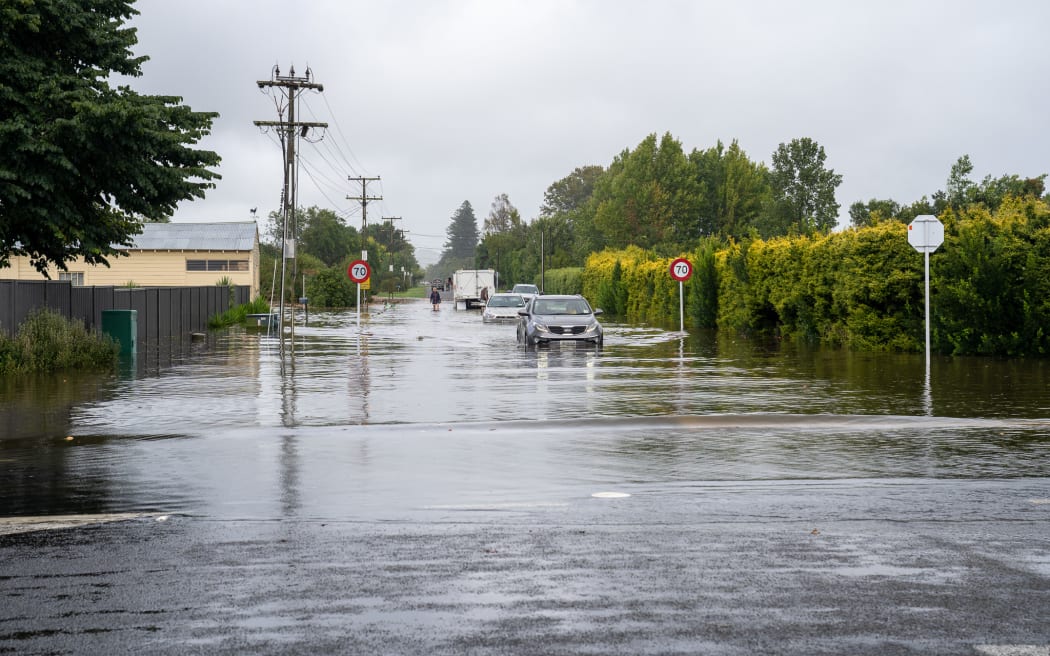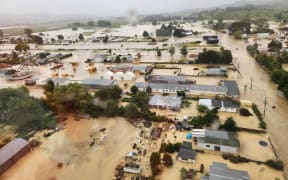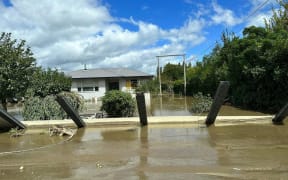
Hastings was among the communities worst hit by Cyclone Gabrielle. Photo: Hasting District Council
Hastings mayor Sandra Hazlehurst says she is hopeful buyout negotiations with Category 3 property owners in the district will start in early October.
The half billion dollar cyclone recovery package agreed between Hawke's Bay councils and the government would enable communities to face the future with certainty, she said.
The package includes a 50:50 buyout option for people with Category 3 homes, which are on land that is unsafe to build on because of the risk of future flooding and loss of life.
Hastings was among the communities worst hit by the cyclone, with up to 300 Category 3 homes as well as major infrastructure damage - including to four key bridges.
Hazlehurst told Morning Report the council was facing a "huge financial burden" but the agreement with the government was what affected residents had been waiting for.
"They've all been waiting for this, there are some people that are ready to move now - everyone's in a different position," she said.
"At least we have some way forward and some clarity and certainty for them."
Exactly how much would be paid for the Category 3 residential properties was still to be determined, but the council hoped to be in a position to begin negotiations with individual property owners at the beginning of October, Hazlehurst said.
"It's going to take us a few weeks to get in and do our consultation and negotiations and engagement with our community."
In addition to the Category 3 buyouts, the cost-sharing package would enable the rebuilding of vital local infrastructure, she said.
"This cost-share package is going to give us certainty to get on and rebuild hundreds of kilometres of our damaged roads and rebuild bridges."
She said as part of the package, $430 million would be coming to Heretaunga/Hastings for rebuilding roading.
"The offer that we have on the table is that the $50 million for the voluntary buyouts will off-set our roading. As we've said all along, our transport costs, our financial burden for transport - for bridges and roads - is $800 million."
While the cost-sharing package would help, the council would need to revisit its long-term plan in the face of the "enormous financial burden" of those infrastructure costs, she said.
"What we thought we might be spending ratepayer's money on, we have to reconsider."
"I consider this is just the beginning, and we'll be working with future governments to help us with infrastructure and rebuild and allowing our region to recover."
Package will enable ongoing flood protection work
Hawke's Bay Regional Council chair Hinewai Ormsby also told Morning Report the cost to ratepayers of rebuilding regional infrastructure would be determined as part of its long-term financial planning.
She said the the council had undertaken a review of its debt capacity and it was in a position to be able to borrow to meet the $44 million it had committed alongside the $203 million the government was providing for flood protection in the region.
The contribution from the Crown for that purpose was "significant" she said and the council was "very thankful" for it.
The council faces major work to repair damaged stopbanks, drains overwhelmed by silt, and significant land damage including landslides and erosion across farmland in many areas.
Also on the agenda is new work such as spillways to prevent future catastrophic flooding.
It had been a "significant decision" across all five councils to accept the government's cost-sharing package, Ormsby said, and the money for flood protection would benefit residents with Category 2 properties - those identified as needing additional flood and resilience protections.
"That's incredibly significant in terms of the Category 2 residents from Wairoa down to Pōrangahau, reaching across the region."
She said "from day dot" following Cyclone Gabrielle, the council had got to work repairing six kilometres-worth of stopbank breaches in the region.
"Our teams have completed that, so now we're looking at whether we build more infrastructure, more flood protection."
She said that would involve working closely with those communities on plans to implement protection mechanisms such as inundation areas and stopbanks.
Ormsby said there would be public consultation early next year with ratepayers about the costs to ratepayers, as part of the council's long-term planning.





